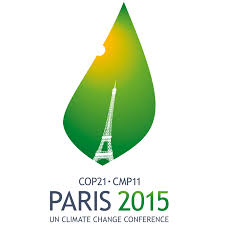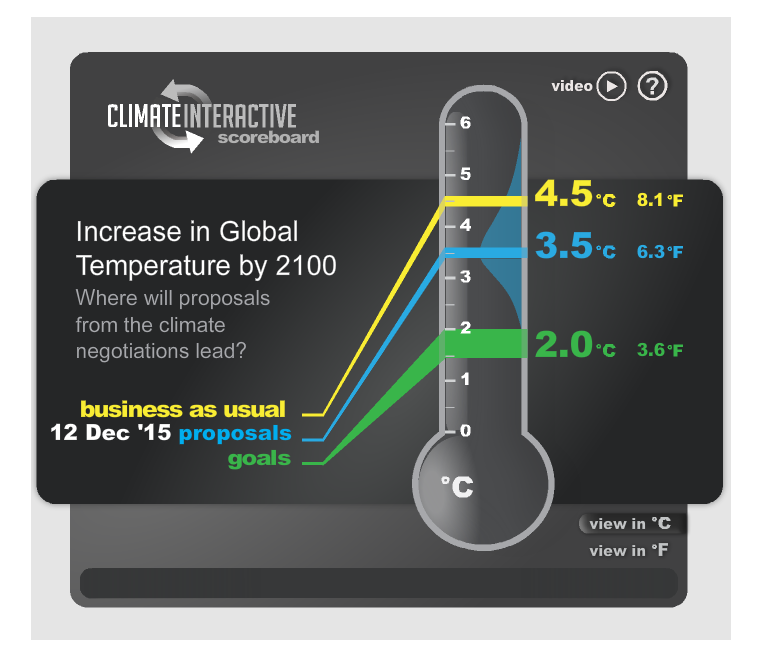Paris Climate Agreement: The Good, the Bad, and the Ugly
 A momentous announcement came out of Paris today, where 196 countries are wrapping up two weeks of negotiations about climate change. They have reached an Agreement. HOORAY! It is good news and there is much jubilation.
A momentous announcement came out of Paris today, where 196 countries are wrapping up two weeks of negotiations about climate change. They have reached an Agreement. HOORAY! It is good news and there is much jubilation.
To get unanimous concurrence about the wording is AMAZING. Lots of hurdles were cleared. Concerns and issues varied widely from developed nations, to developing nations, and to those that face extinction as they submerge beneath the waves. I do find encouragement in this accomplishment and add my congratulations to the hundreds and thousands of people who helped make it happen.
Nonetheless, let’s not get carried away. There are other facets of this. To borrow a fifty year old movie title, let’s look at the good, the bad, and the ugly.
First I might summarize that this is an Agreement to set a goal to contain the amount of warming due to industrialization and population growth. We can think of it in terms of an analogy to set a personal goal to lose weight. What was just agreed in Paris is the equivalent of saying we will get our weight down to “x” over a certain period of time, and preferably down to “y.” To lose weight, we know, requires a combination of diet and exercise. I will return to the metaphor in a moment.
While the ink is still wet on the documents in Paris, let me put the deal into the three perspectives:
The Good:
After limited, some would say failed efforts, at previous major conferences over the last two decades starting with Rio, then Kyoto, then Copenhagen, this agreement by nearly two hundred nations commits to a common goal to keep global warming to 2.0 degrees C (3.6 degrees F), including the warming that has already occurred, calculated at 0.9 C (1.6 F).
Furthermore a preferred and lower target is set for 1.5 degrees C (2.7 F) which means keeping warming to about one more degree. Given the current rate of warming, that is a very ambitious commitment. In fact, I think it is excellent.
Particularly in an era of changing economies, global interconnectedness and awareness, and the desire to raise the quality of life, the implications of constraining the production of energy are vast.
It is impressive that negotiators found ways to get consensus between developed nations such as the U.S., Canada, and across Europe, as well as in the developing world, notably China and India.
Indeed it is testimony to what is at stake and the widely accepted clarity of the science. (Generally there are only two significant areas on Earth that are ignorant of climate change science — certain remote tribes far from civilization, and a majority of the US Congress — I could not resist, mea culpa.)
 The Bad:
The Bad:
As part of these negotiations, each country was allowed to state its own goal in terms of how much it would reduce its emissions that add to greenhouse gases. These individual goals are known as “INDC”s — Intended Nationally Determined Contributions, aptly describing what they are: a statement of intentions about reducing carbon emissions. As shown in the graphic shown here from Climate Interactive, a technical analysis of all the latest INDC’s shows that they do NOT achieve anything like the temperature goal — not even close.
This extremely clear visualization nets out all of the commitments as of today — look at the blue line — and compares it to the goal of 2.0 degrees C, as well as “Business as Usual”, where we are headed on our current path. Back to the losing weight metaphor, it is as if we needed to cut a thousand calories a day from our diet, but are only willing to eliminate 400.
In fact, even the United States commitment does not achieve the stated goal. So, a LOT of work remains to be done in terms of how to achieve the goal to limit the warming. Apparently that is one reason the new Agreement does not go into effect until 2020 to allow time for further efforts to reach the goal. Also there is a process with continuing reviews set up every five years to reassess.
For those wanting a further explanation of the Agreement I recommend the New York Times analysis.
The Ugly
Assuming that A) the world identifies and commits to ways that theoretically achieve the goals, and B) the commitments are kept so that the goals are met, we are still left with a harsh reality: Warming will still be almost double what we have already experienced.
While it is hard to quantify the effects on changed weather patterns, agricultural impacts, diseases, human health, destruction of forests, ocean acidification, and melting of glaciers and ice sheets, those effects are going to increase substantially further in spite of the new goals and intended achievements.
Thus, I have to keep in mind three thoughts today:
- We can celebrate and should congratulate all the negotiators, and all the activists and organizations that pushed forward to this Agreement. It is better than what most expected. Bravo!
- There is much hard work ahead. It will take years and decades to find creative ways to achieve these goals.
- The need to adapt to a warmer world is the sober reality. In addition to the very practical issue of planning and adapting to rising sea level and shifting shorelines — my area of special interest — everyone needs to take the challenge of planning for life in a warmer world, with changing climate patterns as the very highest priority. This is the reality, like it or not.
For today, let’s pop the champagne. It is well deserved. But by the first of the year, let’s rededicate ourselves to finding the very real ways to limit the warming and to adapt to rising seas and the other impacts.
Usually by the first of the year many of us pledge to ourselves that we will exercise more and lose weight. Let’s hope that we do better with those pledges in 2016. Even more important than the personal goals to lose weight, let’s take seriously the need to find the ways to achieve the global goal to keep our climate within the range where humanity can survive and thrive. At this time of resolutions for the new year, that would be the best one possible.
